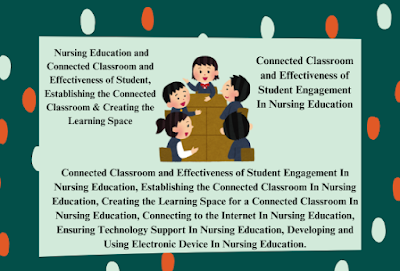Creating the Learning Space In Nursing Education Connected Classroom and Effectiveness of Student Engagement in Nursing Education
A connected classroom leverages digital technology to integrate students, faculty, experts, patients, and virtual clinical experiences. This interactivity is crucial for improving student engagement and learning outcomes. Key benefits include:
- Increased Engagement: Interactive technology fosters active learning and participation.
- Immediate Feedback: Digital tools provide instant feedback, enhancing the learning process.
- Clinical Application: Students can apply theoretical knowledge to real-world clinical scenarios.
- Resource Accessibility: Both students and faculty have immediate access to a wealth of information.
Students are adept at using mobile technology but often need guidance to maximize its benefits in educational settings (Dahlstrom et al., 2013).
Establishing the Connected Classroom in Nursing Education
Creating a connected classroom involves:
- Technological Setup: Ensure the classroom is equipped with the necessary digital tools and internet connectivity.
- Interactive Methods: Faculty and students must learn to use these technologies effectively.
- Privacy and Security: Implement computer use policies to protect student and patient information.
Creating the Learning Space for a Connected Classroom in Nursing Education
Designing a connected classroom requires a layout that promotes interaction:
- Flexible Layout: Use movable chairs and tables to facilitate group work and individual study.
- Visual Displays: Install wall-mounted screens, smartboards, and other display technologies around the room.
- Technology Integration: Ensure the space is suitable for teleconferences, telehealth, and virtual meetings.
Connecting to the Internet in Nursing Education
Internet access is crucial for the connected classroom:
- Wi-Fi Access: Ensure reliable Wi-Fi for students and faculty. Check network capacity to support multiple simultaneous connections.
- Wired Connections: Provide Ethernet cables as a backup if wireless connectivity is problematic.
Ensuring Technology Support in Nursing Education
Effective technology support is essential for both faculty and students:
- Technical Assistance: Plan for tech support when selecting hardware and software. Institutions often offer IT services and support.
- Vendor Support: Check the support options provided by software vendors, including in-class training and customer service.
Developing and Using Electronic Devices in Nursing Education
Clear policies on electronic device use are critical:
- Privacy and Security: Address potential privacy issues related to digital devices in clinical settings, adhering to HIPAA and other regulations.
- Device Cleanliness: Implement policies for cleaning devices to prevent cross-contamination in healthcare settings.
- Classroom Policies: Establish guidelines for device use during exams and other academic activities to prevent distractions and ensure academic integrity.
Policy Considerations
- Clinical Settings: Policies should prevent the storage or transmission of patient-identifiable information beyond clinical environments.
- Usage Restrictions: Limit the use of social media and personal calls during clinical activities as per clinical agency policies.
- Judicial Process: Outline the process for addressing policy violations and ensuring adherence to rules.
By thoughtfully integrating technology and establishing clear guidelines, nursing education programs can create effective, connected learning environments that enhance student engagement and learning outcomes.
